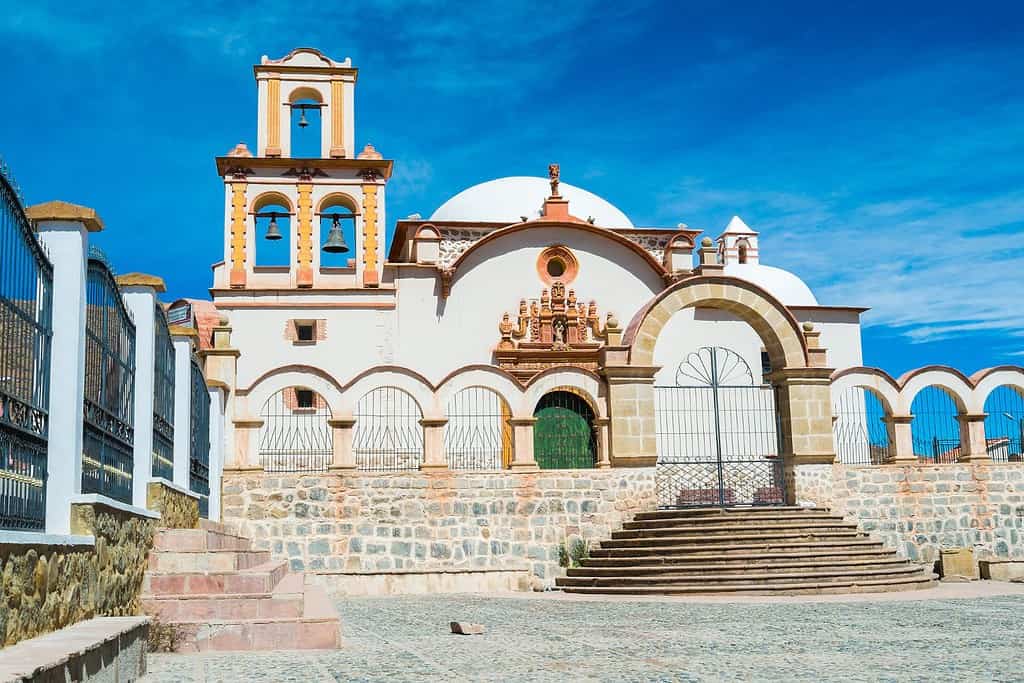Table of Contents
Where is Bolivia located? Bolivia is a country located in South America, in the central-western part of the continent. It is landlocked and is one of the largest countries in South America.
Bolivia is situated in the heart of the continent, with diverse terrains that range from the Andean mountains to the Amazon rainforest. It shares borders with several neighboring countries. To the north and east, it is bordered by Brazil. To the south, it shares a border with Argentina and Paraguay. To the west, it is bounded by Chile and Peru.
Where is Bolivia located: South America.
Location of Bolivia on the World Map
Bolivia World
Map of Bolivia.
Bolivia Profile – Where is Bolivia located
Here are 10 of the most important facts about Bolivia:
- Official Name: Plurinational State of Bolivia
- Capital City: Sucre (constitutional and judicial) and La Paz (seat of government and executive capital)
- Population: Approximately 11.5 million (as of 2021)
- Official Language: Spanish and 36 indigenous languages
- Currency: Bolivian Bolíviano (BOB)
- Major Religion: Roman Catholicism (with significant Protestant and indigenous beliefs)
- Government: Unitary presidential constitutional republic
- Area: Approximately 1,098,581 square kilometers
- GDP (Gross Domestic Product): $40.29 billion (as of 2021)
- Main Exports: Natural gas, zinc, gold, silver, lead, tin, and quinoa.

Borders of Bolivia
Bolivia shares land borders with five countries.
| Bordering Country | Approximate Length of Border (in kilometers) |
|---|---|
| Argentina | 832 km |
| Brazil | 3,400 km |
| Chile | 860 km |
| Paraguay | 750 km |
| Peru | 1,075 km |
Bolivia Map
Navigate over this map with your mouse to discover Bolivia’s map location.
Bolivia
Most Extreme Points of Bolivia
Bolivia has several extreme points in different directions:
- Northernmost Point: Near the border with Brazil, in the Pando Department.
- Southernmost Point: Near the border with Argentina, in the Tarija Department.
- Easternmost Point: Near the border with Brazil, in the Santa Cruz Department.
- Westernmost Point: Near the border with Peru and Chile, in the La Paz Department.
Highest Points of Bolivia
The highest point in Bolivia is Sajama, reaching an elevation of approximately 6,542 meters above sea level. It is part of the Cordillera Occidental mountain range.
| No. | Mountain | Elevation (meters) |
|---|---|---|
| 1 | Sajama | 6,542 |
| 2 | Illimani | 6,438 |
| 3 | Huayna | 6,088 |
| 4 | Ancohuma | 6,427 |
| 5 | Illampu | 6,368 |
How big is Bolivia?
Bolivia covers an area of approximately 1,098,581 square kilometers, making it the 28th largest country in the world.
Comparison with Neighboring Countries
Here is a comparison of Bolivia with its neighboring countries based on approximate size and population as of 2021:
| Country | Approximate Size (sq. km) | Approximate Population | Bolivia’s Size Compared to Neighboring Country | Bolivia’s Population Compared to Neighboring Country |
|---|---|---|---|---|
| Brazil | 8,515,767 | 212.6 million | 7.27 times smaller | 0.43 times smaller |
| Chile | 756,102 | 19.4 million | 81.28 times bigger | 1.36 times smaller |
| Paraguay | 406,752 | 7.4 million | 151.45 times bigger | 2.88 times smaller |
| Argentina | 2,780,400 | 45.3 million | 21.97 times bigger | 0.59 times smaller |
| Peru | 1,285,216 | 32.4 million | 47.41 times bigger | 0.78 times smaller |
| Colombia | 1,141,748 | 51.4 million | 53.34 times bigger | 0.53 times smaller |
What to Visit in Bolivia?
Bolivia offers a rich tapestry of history, culture, and natural beauty. Here are the top 10 tourist attractions:
- Tiwanaku: Also known as Tiahuanaco, this ancient archaeological site is a UNESCO World Heritage Site, showcasing well-preserved remnants of an ancient civilization, much like Machu Picchu in Peru.
- La Paz: Bolivia’s administrative capital, it’s a bustling city nestled in the high Andes mountains, known for its stunning views, vibrant markets like the Witches’ Market, and the Valley of the Moon.
- Sucre: The constitutional capital of Bolivia, known for its colonial architecture, including the UNESCO-listed historic center. Visit the House of Liberty, where Bolivia’s Declaration of Independence was signed.
- Potosí: A historic mining town famous for Cerro Rico, a mountain rich in silver. Explore the Casa de la Moneda, once a royal mint, and delve into the mining history of the region.
- Salar de Uyuni: The world’s largest salt flat, offering a surreal, mirror-like landscape. It’s a must-visit for its unique beauty and the opportunity to take stunning perspective-distorted photos.
- Madidi National Park: Located in the Amazon Basin, this park is a biodiversity hotspot, home to a vast array of wildlife and lush rainforests. It’s ideal for eco-tourism and jungle adventures.
- Copacabana: A picturesque town on the shores of Lake Titicaca, known for its stunning views of the lake and the famous Basilica of Our Lady of Copacabana, a significant religious site.
- Tupiza: A charming town in southern Bolivia, surrounded by stunning red rock formations and canyons. It’s an excellent base for exploring the dramatic landscapes of the Andes.
- Uyuni: A town near the Salar de Uyuni, known for its quaint charm and as a starting point for tours to the salt flat.
- Santa Cruz: Bolivia’s largest city in the eastern lowlands, offering a mix of modern amenities, parks, and cultural attractions. Explore the historic downtown and visit the Biocentro Güembé for a taste of nature.
These Bolivia destinations offer a diverse array of experiences, from delving into ancient history and cultural significance to savoring the vibrant urban life and immersing oneself in the breathtaking natural beauty of Bolivia’s landscapes. Please be aware that certain locations may come with particular restrictions or entry prerequisites, particularly at sacred sites such as Tiwanaku and Copacabana, so it’s crucial to verify these details before finalizing your travel plans.
More About Bolivia
[the-post-grid id=”50345″ title=”Bolivia Main page”]
